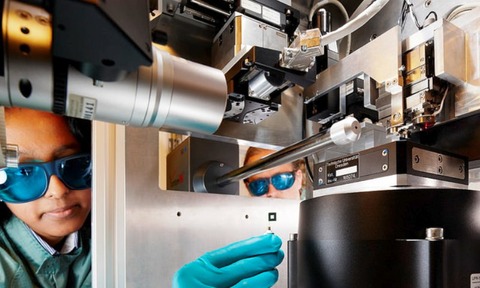IBM boosts big data in imaging
21 Aug 2014

Big data software could handle more than 20 gigabytes of storage per second, company claims.
IBM has today announced it is entering in to a partnership with German research centre Deutsches Elektronen-Synchrotron (DESY) to massively speed up the management and storage of large volumes of X-ray data.
The bid data architecture, based on IBM software defined technology, is designed to handle more than 20 gigabyte per second of data at peak performance and help scientists worldwide gain faster insights into the atomic structure of novel semiconductors, catalysts, biological cells and other samples.
“IBM can take the experience gained at DESY and transfer it to other fields of data intensive science
IBM general manager Jamie Thomas
The DESY 1.7 mile-long PETRA III accelerator is a super microscope that speeds up electrically charged particles nearly to the speed of light, and sends them through a tight magnetic slalom course to ’generate the most brilliant x-ray radiation of its kind’, IBM said
According to IBM, one of the main challenges in this process is managing huge volumes of X-ray data produced by detectors that take high-speed ’snapshots’ of tens of thousands of samples in quick succession and record the measurements.
“A typical detector generates a data stream of about 5 gigabytes per second, which is about one CD-ROM of data per second,” said Volker Gülzow, head of DESY IT.
“For PETRA III, we are currently expanding from 15 detectors to 25 and each detector could end up generating more than 20 gigabytes of data per second. Current storage options simply would not be able to provide the necessary quick access to the most accurate data for our scientists.”
IBM’s ’Elastic Storage’ is designed to provide scientists with high-speed access to increasing volumes of research data by placing critical data close to everyone and everything that needs it
“IBM’s software defined storage technologies can provide DESY the scalability, speed and agility it requires to morph into a real-time analytics service provider,” said Jamie Thomas, general manager Storage and Software Defined Systems, IBM.
“IBM can take the experience gained at DESY and transfer it to other fields of data intensive science such as astronomy, climate research and geophysics and design storage architectures for the analysis of data generated by distributed detectors and sensors,” he added.

